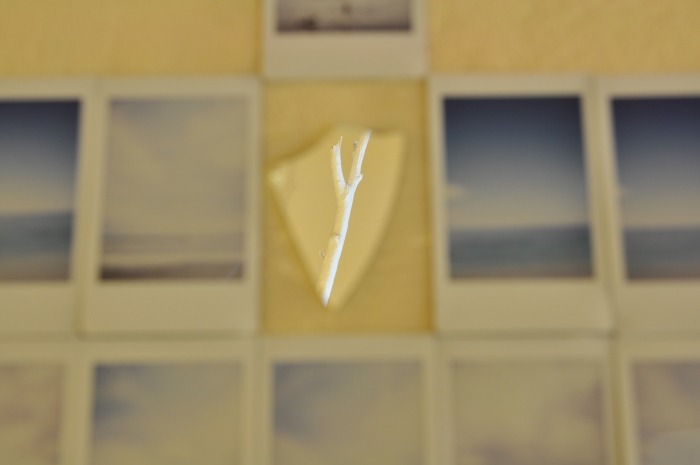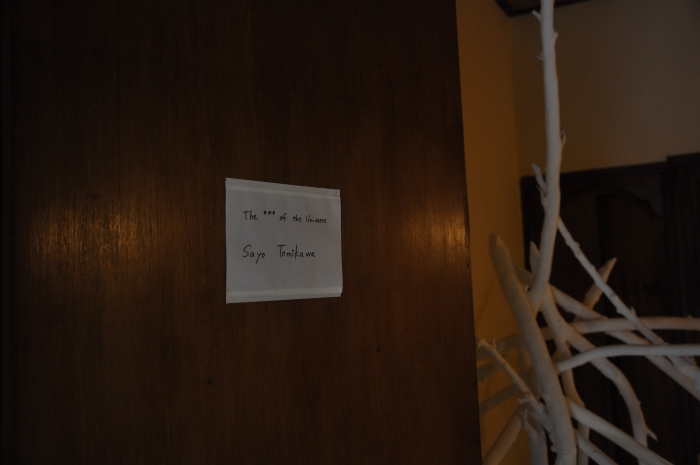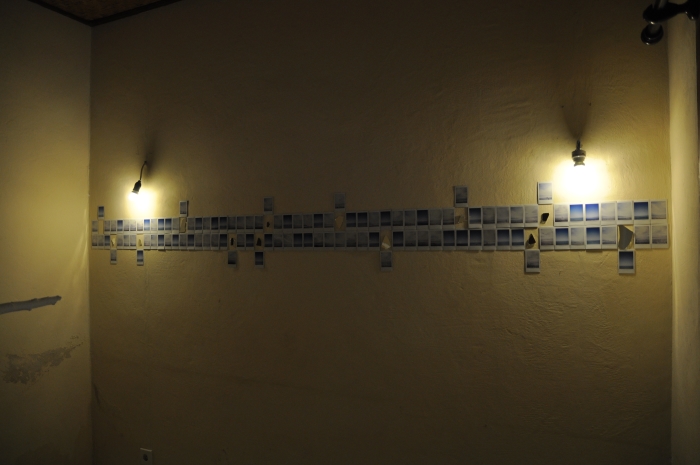熱帯のアトリエ(2)Tropical Art Studio – 2
May 08, 2015
基本情報
研修者:美術研究科先端芸術表現専攻修士・博士学生 計7名
研修先:インドネシアバリ島ウブドにおける展覧会「Transmigration2015」
研修期間:2015年3月15日~2015年3月31日
※この研修は、平成26年度藝大基金「海外派遣奨学金制度」のご支援により行われました。
海外研修の成果(参加学生の個人レポート②)
今回のプロジェクトでは、初めての日本以外での滞在制作・展示にあたって、自分自身のテーマを設定していました。それは、開発途上国のインドネシアで、Contemporary Artという文脈を持ち合わせていない現地の人々に、どのように自分の表現したいコンセプトを伝えられるか、また、現地でのコンテクストを交え、どのように興味を持ってもらえるか、ということでした。
現地の文化をある程度事前に日本で調べ、それをふまえた上で現地の人々と交流し、興味を持ってもらえる形でアウトプットすることを優先し、プロジェクトに臨みました。普段制作している自分のコンセプトを絡めつつ、ある程度キャッチーな形で、また、バリの人々は細密画や影絵など2次元でのアウトプットの力が凄いので、平面で伝わりやすいよう、写真というメディアを使ったインスタレーションを行いました。
細かい内容としては、木材を海で拾ってきて、それを塗装し、プリントの技術があまり十分ではないと聞いていたので、日本からポラロイドカメラ、ポラロイドフィルムを持参し、人間が映り込むように海で撮った108点の写真と、それらが映り込むようにガラスの破片を使ったインスタレーションを展示しました。
現地の人は私の作品の見た目で驚き、それによって興味を持ってもらえたので、その点では成功と言えます。「どういう意味?」という質問が多く、また、それはどの作家に対しても同様でした。バリの人々が普段からしっかりしたコンテクストを持った上で儀礼やお供えの行為をしているのだと考えると、それはごく自然な質問といえます。インドネシア語を話せたら、もっと深い部分で話が出来たのではと思い、悔しさを感じました。ある程度インドネシア語を学んでから、もう一度展示に臨みたいです。
今回の滞在制作・展示を踏まえてわかったことは、当たり前のことですが、日本で行う展示とは全然違う、ということです。とくに、開発途上国や発展途上国では、先進国とはまた別の次元でアートが存在しているのではないか、と感じました。今後海外で展示をする際は、コミュニケーションツールの一部として作品が存在し、自分自身の作品が伝わるように、もっと密なコミュニケーションを意識したいと思います。
奨学金制度への謝辞
渡航費をご支援いただき、非常に感謝しております。次の機会には長い期間滞在し、より有意義な活動をしたいと考えています。
Basic Information
Participant(s): Master’s and Doctoral students in the Inter-Media Art program (7 students)
Location: Ubud, Bali, Indonesia (Participated in an exhibition “Transmigration 2015”)
Period: March 15, 2015 – March 31, 2015
Achievements (A personal report from a participant – 2)
In this project, which was my first production activity and exhibition overseas, I set a theme for myself of how the concept that I wished to represent could be communicated to local people of the developing nation who were not familiar with a context of Contemporary Art, and how my art works could attract their attention with a help of a local context.
I made enough preliminary research while I was in japan, which helped me to interact with local Indonesian people. During my project, my priority was to produce outcomes in a manner that could draw their attention. Mixing with my own art concept in Japan, and in a “catchy form”, I produced an installation using photographic images, as I thought two-dimensional expression would be more appealing to the Balinese people who excel in 2D form of art such as miniatures and shadow pictures.
In precise, the installation consisted of wood materials which I collected on the beach and painted, and of 108 pictures taken in the sea in a manner to mirror people on the water surface, which were exhibited with pieces of glasses to reflect the pictures. I brought with me a Polaroid camera and the film from Japan, as I had learned that printing techniques were not super excellent in Bali.
Local people seemed amazed by the look of my installation and interested for that reason, on which aspect my trial could be called successful. Many people asked me” What do they mean? ” and it was also a common question other artists were asked. I found it a quite natural reaction, considering that the Balinese people have a solid context which forms the basis of their courtesy or how to present offerings to the gods. I felt sorry for not being able to speak Indonesian, which could have helped me to enter a deeper conversation with them. I would like to have another exhibition when I am adequately furnished with Indonesian language.
I learned from this time’s experience that an exhibition outside of Japan was completely different from one in Japan, which of course is nothing surprising. In particular, I had the impression that art exists on different levels between developed nations and developing nations. In an overseas exhibition to hold in the future, my art works should exist as a part of communication tool, and I will pay more attention to a closer communication with the local people, wishing my art works reach them.






